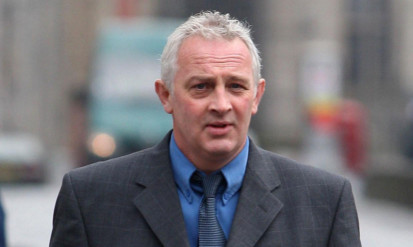Nat Fraser has lost an appeal against his second conviction for killing his wife.
The 54-year-old former businessman has twice been found guilty of the murder of his estranged wife, Arlene Fraser.
He was jailed for life and ordered to spend at least 17 years behind bars in May last year for organising the murder of the mother-of-two whose body has never been found.
Fraser has consistently denied involvement in the disappearance of Ms Fraser who was 33 when she vanished from her home in New Elgin, Moray, on April 28 1998.
At an appeal hearing last month, Fraser’s legal team argued that he was denied a fair trial.
A comment made by a witness, referring to time Fraser spent in custody, was prejudicial and may have led jurors to do their own research on the case, defence QC John Scott said.
But judges at the Court of Criminal Appeal in Edinburgh dismissed the appeal.
Mr Scott argued that the comment made by Sandra Stewart in the witness box lastyear referred to a previous conviction Fraser had for assaulting his wife to thedanger of her life weeks before she disappeared.
The “Google factor” increased the risk of jurors potentially finding prejudicial material on the internet if they searched for it, he said.
Lord Justice Clerk Lord Carloway, who heard the appeal with Lady Paton and Lord Drummond Young, said the court was not persuaded that the remark pointed towards the previous conviction.
“The court does not consider that there is any realistic possibility that the short answers which were given … in isolated moments, in the course of a lengthy trial examining in detail the circumstances of Mrs Fraser’s disappearance, would have promoted any recollection of a previous conviction in the minds of the Edinburgh jurors.
“Such recollection would presuppose a remarkable, and it might be reasonably surmised, implausible power of memory retention in the minds of persons with no obvious direct connection to the case, the locality or the criminal justice system.”
